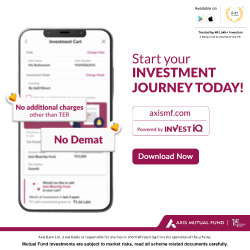Modi Meets Xi: Trump’s Tariffs, Strategic Autonomy, and the Future of Asia’s Power Balance
Trump as the Unlikely CatalystFor years, Washington was seen as India’s closest strategic
- by Shan 2025-09-03 06:40:06
Introduction: When Three Giants Collide
The recent meeting between Indian Prime Minister Narendra Modi and Chinese President Xi Jinping in Tianjin was more than a diplomatic handshake. It came at a time when Donald Trump’s trade offensive against India has shaken New Delhi’s foreign policy priorities, creating a complex triangle of India–China–US relations.
While official statements were light on detail, the timing, symbolism, and backdrop of the meeting tell a much deeper story. Let’s break down the key takeaways.
Trump as the Unlikely Catalyst
For years, Washington was seen as India’s closest strategic partner, especially in countering China’s rise in the Indo-Pacific. But Trump’s decision to slap 50% tariffs on Indian imports has left Delhi reeling.
India now faces a difficult question: stick with its old ally, or diversify partnerships—even if that means engaging a rival like China. Ironically, Trump’s tariffs may be the biggest push India needed to reopen dialogue with Beijing.
The Symbolism of Modi in Tianjin
This was Modi’s first visit to China since the Galwan Valley clashes of 2020, which froze relations for years. The return of face-to-face diplomacy signals that both sides are ready—at least symbolically—to thaw tensions.
The immediate outcomes? Resumption of direct flights and easier visas. Small steps, but symbolically important when the world’s two most populous nations decide to talk again.
Strategic Autonomy: Delhi’s Balancing Act
India has long pursued “strategic autonomy”—avoiding being locked into any one camp. The Modi–Xi meeting is part of that strategy.
With the Quad Summit (India, US, Japan, Australia) coming up, Delhi must balance its US alignment with China outreach.
Russia remains India’s “all-weather” partner, especially in defense and energy.
China offers economic opportunity but also represents the biggest trade deficit India faces—over $99 billion.
Delhi is now playing a multi-board chess game: one move toward Beijing, another toward Washington, all while holding Moscow close.
The Border Question Still Looms Large
Despite diplomatic niceties, tens of thousands of troops remain stationed along the disputed India–China border.
Both sides have pledged not to let their “differences become disputes,” but history shows the border issue has derailed progress before. Any fresh skirmish could undo the new goodwill overnight.
China’s View: Dragon Meets Elephant
For Xi Jinping, Modi’s presence in Tianjin was a propaganda win. He repeated his favorite metaphor: “The dragon and the elephant should come together.”
Beijing sees opportunity: Trump’s tariff war is pushing India away from the US, and China can step in as the alternative partner. With the Shanghai Cooperation Organisation (SCO) Summit bringing together Russia, Turkey, Saudi Arabia, and even Pakistan, the optics of Modi and Xi standing together were powerful.
The Road Ahead: Uncertain but Crucial
The Modi–Xi meeting doesn’t mean India and China are suddenly friends. Far from it. The roadblocks—border disputes, trade imbalances, Pakistan—remain as strong as ever.
But Trump’s tariffs have shaken the old order, forcing Delhi to rethink alliances. The coming months will test whether India can truly balance ties with the US, China, and Russia without being pulled too far in any one direction.
For now, the handshake in Tianjin is less about peace and more about positioning in a fast-changing world.
Conclusion: The Wildcard Factor
Global geopolitics often moves in unexpected ways. Who would have thought that Donald Trump—by targeting India with harsh tariffs—would indirectly push Modi closer to Xi?
Whether this shift lasts depends on how carefully Delhi plays its strategic autonomy card. The elephant and the dragon may share a stage for now, but the real drama will unfold when Trump makes his next move.
Also Read: Google Claims Gemini AI Uses Just ‘Five Drops of Water’ Per Prompt, Sparks Debate

POPULAR POSTS
Loan EMIs to Drop as RBI Slashes Repo Rate - Full MPC December 2025 Highlights
by Shan, 2025-12-05 11:49:44
Zoho Mail vs Gmail (2025): Which Email Platform Is Best for Businesses, Startups, and Students?
by Shan, 2025-10-09 12:17:26
PM Modi Launches GST Bachat Utsav: Lower Taxes, More Savings for Every Indian Household
by Shan, 2025-09-24 12:20:59
$100K H-1B Visa Fee Explained: Trump’s New Rule, Clarifications & Impact on Indian Tech Workers
by Shan, 2025-09-22 10:11:03
India-US Trade Deal Soon? Chief US Negotiator Arrives in Delhi as Talks Set to Begin Tomorrow
by Shan, 2025-09-15 11:54:28
Google Claims Gemini AI Uses Just ‘Five Drops of Water’ Per Prompt, Sparks Debate
by Shan, 2025-08-22 12:34:27
Fired by Elon Musk, Ex-Twitter CEO Parag Agrawal Launches ‘Deep Research API’ to Rival ChatGPT
by Shan, 2025-08-19 11:50:13
RECENTLY PUBLISHED

Pine Labs IPO 2025: Listing Date, Grey Market Premium, and Expert Outlook
- by Shan, 2025-11-05 09:57:07

The Agentic Revolution: Why Salesforce Is Betting Its Future on AI Agents
- by Shan, 2025-11-05 10:29:23

Top 10 Insurance Companies in India 2026: Life, Health, and General Insurance Leaders Explained
- by Shan, 2025-10-30 10:06:42

OpenAI Offers ChatGPT Go Free in India: What’s Behind This Big AI Giveaway?
- by Shan, 2025-10-28 12:19:11

Best Silver Investment Platforms for 2025: From CFDs to Digital Vaults Explained
- by Shan, 2025-10-23 12:22:46





 Subscribe now
Subscribe now 